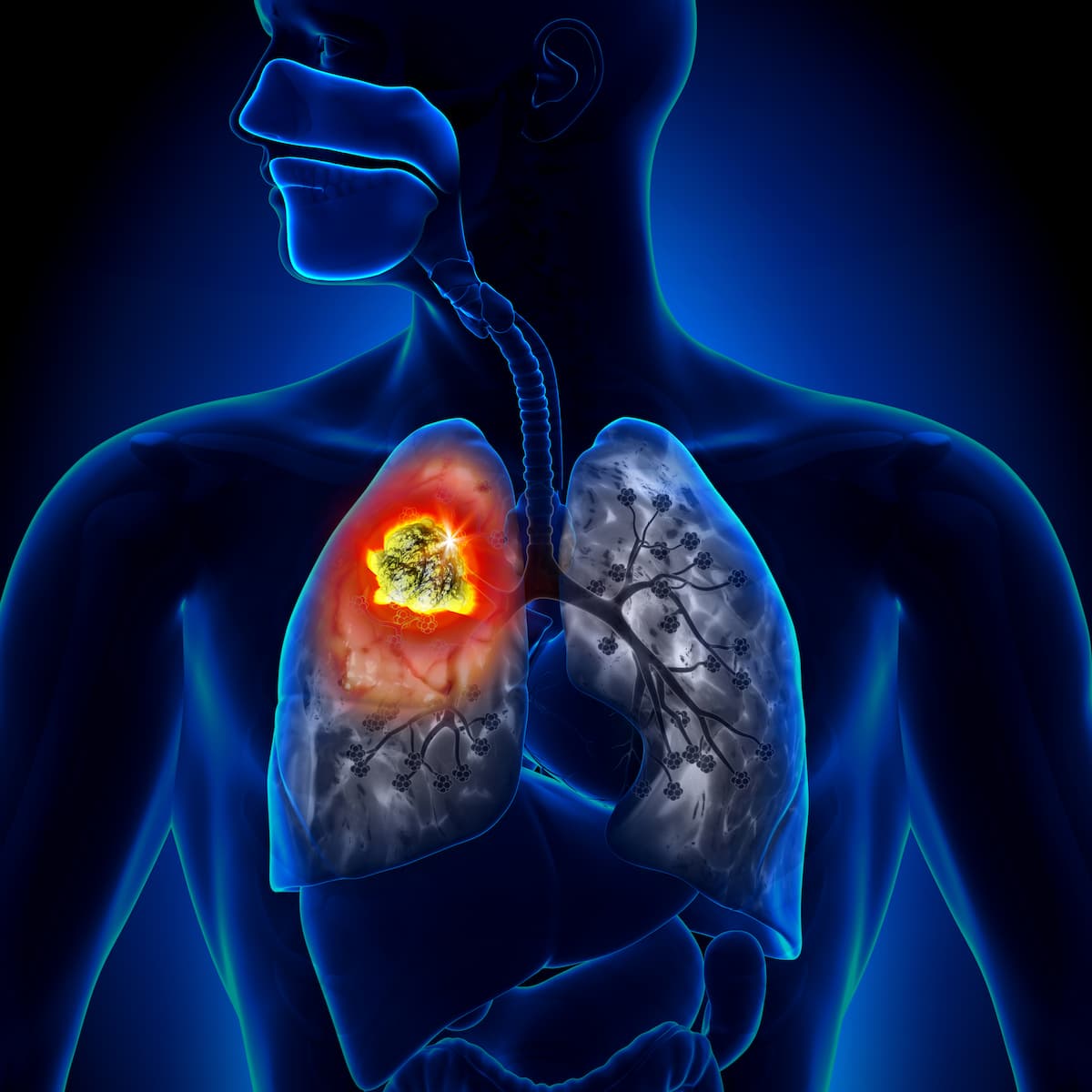Trial Assessing Savolitinib/Osimertinib in NSCLC Completes Enrollment
Topline data are expected to be available in the first half of 2026 after the submission of results for presentation at a medical conference.
The savolitinib-based combination was approved for NSCLC in China in June 2025 and was supported by data from the phase 3 SACHI trial.

The combination of savolitinib (Orpathys) and osimertinib (Tagrisso) is being assessed in patients with locally advanced or metastatic EGFR-mutated, MET-overexpressed and/or amplified non–small cell lung cancer (NSCLC) in the phase 3 SAFFRON trial (NCT05261399). The trial completed enrollment, with the last patient undergoing random assignment on October 31, 2025, according to a news release from the developer, HUTCHMED Limited.1
The developers established the combination as a chemotherapy-free, all-oral regimen for patients following progression on EGFR tyrosine kinase inhibitors (TKIs). Savolitinib is an oral, highly selective MET TKI. The combination was approved in China in June 2025 and was supported by data from the phase 3 SACHI trial (NCT05015608).
SACHI Trial Results
Data from the phase 3 SACHI trial presented at the 2025 American Society of Clinical Oncology (ASCO) Annual Meetingrevealed that the median progression-free survival (PFS) was 9.8 months (95% CI, 6.9-12.5) with the investigational combination vs 5.4 months (95% CI, 4.2-6.0) with chemotherapy (HR, 0.34; 95% CI, 0.21-0.56; P < .0001) among patients treated with prior first- or second-generation EGFR-TKIs. Similarly, the median PFS among those treated with third-generation EGFR-TKIs was 6.9 months (95% CI, 4.2-9.7) vs 3.0 months (95% CI, 2.7-4.6) in each of the respective arms (HR, 0.32; 95% CI, 0.18-0.57; P < .0001). In the intention-to-treat (ITT) population, the median overall survival (OS) was 22.9 months (95% CI, 16.8-not estimable [NE]) with savolitinib/osimertinib vs 17.7 months (95% CI, 14.9-26.3) with chemotherapy (HR, 0.84; 95% CI, 0.55-1.29).
Additionally, the objective response rate in the ITT population was 58% (95% CI, 49%-68%) in the investigational arm vs 34% (95% CI, 25%-44%) in the chemotherapy arm (OR, 2.74; 95% CI, 1.50-4.98; P = .0004), with a disease control rate (DCR) of 89% (95% CI, 81%-94%) and 67% (95% CI, 57%-76%), respectively (OR, 3.98; 95% CI, 1.81-8.82; P = .0001). The median duration of response (DOR) in the respective arms was 8.4 months (95% CI, 5.9-11.1) vs 3.2 months (95% CI, 2.8-4.2).
“[The] combination of savolitinib and osimertinib shows a clinically meaningful improvement in median PFS, ORR, and DOR vs chemotherapy as a second-line treatment for patients who [experienced] EGFR TKI failure,” said Shun Lu, MD, PhD, director of the Oncology Department and professor at Shanghai Chest Hospital, in the presentation of the SACHI results.2 “The safety profile of savolitinib and osimertinib combination was favorable with no new safety signals or unexpected toxicities.”
SAFFRON Trial Design
Patients in the phase 3 SAFFRON trial were randomly assigned 1:1 to receive 300 mg of savolitinib as three 100 mg tablets orally twice daily and 80 mg of osimertinib tablets once daily or 500 mg/m2 of pemetrexed with 75 mg/m2 of cisplatin or carboplatin at area under the curve 5 on day 1 of four 21-day cycles followed by 500 mg/m2 of pemetrexed maintenance every 3 weeks, all given intravenously.3 Those eligible for random assignment included patients 18 years and older with histologically or cytologically confirmed locally advanced or metastatic NSCLC and at least 1 sensitizing EGFR mutation.
The primary end point of the phase 3 SAFFRON trial is PFS per RECIST v1.1 criteria by blinded independent committee review. Secondary end points included OS, ORR, pharmacokinetics, DOR, and safety.
Topline SAFFRON data are expected to be reported in the first half of 2026, following their submission for presentation at an upcoming medical congress. According to the developers, favorable results could support further regulatory filings for the combination among patients with MET-overexpressed NSCLC.
References
- HUTCHMED announces enrollment completed of SAFFRON global phase III Trial of ORPATHYS® and TAGRISSO® combination for certain lung cancer patients with MET overexpression and/or amplification after progression on TAGRISSO®. News release. HUTCHMED Limited. November 5, 2025. Accessed November 5, 2025. https://tinyurl.com/2r8kd7j4
- Savolitinib (Savo) combined with osimertinib (osi) versus chemotherapy (chemo) in EGFR-mutant (EGFRm) and MET-amplification (METamp) advanced NSCLC after disease progression (PD) on EGFR tyrosine kinase inhibitor (TKI): Results from a randomized phase 3 SACHI study. J Clin Oncol. 2025;43(suppl 17):LBA8505. doi:10.1200/JCO.2025.43.17_suppl.LBA8505
- Savolitinib plus osimertinib versus platinum-based doublet chemotherapy in participants with non-small cell lung cancer who have progressed on osimertinib treatment (SAFFRON). ClinicalTrials.gov. Updated January 10, 2025. Accessed November 5, 2025. https://tinyurl.com/5awekv6e